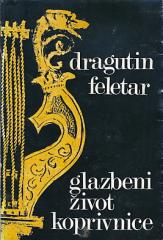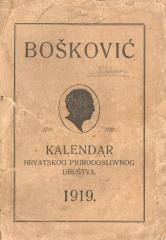
Tumač obćemu austrijskomu gradjanskomu zakoniku I - II
Das 1811 veröffentlichte Allgemeine österreichische Zivilgesetzbuch stellt nach dem berühmten französischen Code Civil von 1804 die zweite bedeutende Kodifizierung des Zivilrechts in Europa dar. OGZ in Kroatien und Slawonien wurde 1852 eingeführt, als das
Das Allgemeine Bürgerliche Gesetzbuch, das am 1. Januar 1812 in allen Ländern in Kraft trat, die damals zur österreichischen Krone gehörten, und in anderen Ländern der Monarchie gemäß der im vorherigen Teil angegebenen Chronologie Dieses Werk veränderte die österreichische Feudalgesellschaft als Ganzes erheblich und legte den Grundstein für eine Reform dieser Gesellschaft an ihren Wurzeln. Diese Veränderungen traten nicht unmittelbar nach Beginn der Anwendung des OGZ in den österreichischen Ländern ein, wohl aber nach dem Revolutionsjahr 1848, als die Forderungen breiterer Volksschichten in der Monarchie und revolutionäre Einflüsse außerhalb der Monarchie zunahmen Der Staat zwang die politische Elite, die notwendigen Änderungen im politischen und rechtlichen System vorzunehmen. Es wird gesagt, dass das OGZ in bestimmten Teilen Istriens und Dalmatiens am 1. Oktober 1815 in Kraft trat und am 1. Januar 1820 im Bezirk Karlovac endete, der früher das Königreich war Illyrien unter französischer Verwaltung wurde am 20. November 1852 endgültig eingeführt und trat am 1. Mai 1853 in Kroatien und Slawonien zusammen mit Ungarn, der serbischen Vojvodina und dem Banat Tamiz in Kraft.
Dennoch war das OGZ als allgemeines und einzigartiges Bürgerliches Gesetzbuch für kurze Zeit in der gesamten Monarchie in Gebrauch und in Kraft, da es Ungarn gelang, das Bürgerliche Gesetzbuch durch die Zentralregierung in Wien außer Kraft setzen zu lassen. Das OGZ galt in der gesamten Habsburgermonarchie bis zum 1. Mai 1861 und von diesem Tag an, als die kaiserlichen und königlichen Gerichtsbezirke in Ungarn ihre Tätigkeit einstellten. Dem ging das sogenannte voraus Oktoberdiplom, mit dem der Wiener Hof die Gerichtsgesetzgebung an das Parlament der Länder der ungarischen Krone zurückgab. Gemäß dieser Entscheidung wurde mit Beschluss vom 20. Januar 1861 die ungarische Abteilung des Kaiserlich-Königlichen Obersten Gerichtshofs und des Obersten Stadtgerichts aufgelöst und die Königliche Siebenertafel neu geordnet. Auf der Grundlage dieser Situation wurde am 22. Januar 1861 in Pest eine Judex-Curiae-Konferenz eröffnet, die sich aus Septemvirn zusammensetzte, allesamt hervorragende Experten des ungarischen Rechts, und deren Aufgabe es war, eine unabhängige ungarische Justiz zu organisieren, was auch genehmigt wurde eigenhändiger königlicher Brief vom 20. Oktober 1860.
Eines der grundlegenden Merkmale der OGZ besteht darin, dass die kroatische Rechtsordnung durch sie ihre Verbindung zum kontinentaleuropäischen Rechtskreis, seiner Untergruppe, die als mitteleuropäisches Recht bezeichnet wird, herstellte und Teil der römisch-germanischen Rechtstradition ist. 68 Bereits aus dem früheren Teil der Darstellung dieses Themas ist ersichtlich, dass dieser Kodex für den gesamten Staat von außerordentlicher Bedeutung war, weshalb die Machthaber auch die Arbeitsgruppen um eine besondere Herangehensweise bei der Erstellung der Grundlagen des Kodex gebeten haben, und wir zeigte, dass es ein ähnliches Verfahren in anderen Staaten gab, die zuvor das Privatrecht des Kaiserreichs Österreich kodifizierten. Aufgrund ihrer Bedeutung führte die Kodifizierung des Privatrechts als eine Art Kettenreaktion zu einer ganzen Reihe von Änderungen und der Verabschiedung neuer Verordnungen und Gesetze, die möglicherweise keinen direkten Bezug zum Privatrecht haben und sich nicht ausschließlich darauf beziehen sie aber indirekt betreffen oder sie regeln zum Teil auch privatrechtliche Verhältnisse und gehören ihrem Inhalt nach zum öffentlichen Recht.
Das OGZ galt auf dem Gebiet der Österreichisch-Ungarischen Monarchie sowie im ersten und zweiten Jugoslawien, bis diese privatrechtlichen Regelungen durch nationale ersetzt wurden. Die Länder, in denen es gültig war, waren Dalmatien und Istrien; Kroatien und Slawonien; Vojvodina; Slowenien. Es galt auch in der Lombardei und Venetien (Venedig) bis zur Vereinigung Italiens in der zweiten Hälfte des 19. Jahrhunderts. Jahrhundert. Es ist in der Republik Österreich noch immer in Kraft und wurde 1914–1916 geändert.
Das Buch besteht aus zwei Bänden.
Angeboten wird ein Exemplar.

- Mit Bleistift unterstrichen

- Beschädigter Rücken





